Portuguese T-37C ; Hasegawa 1/72
Portuguese T-37C ; Hasegawa 1/72
HISTORY
In order to replace the T-33 as a jet trainer, the Portuguese Air Force (FAP) received the first 12 Cessna T-37C Tweety Bird, in December 1962, supplied by the United States. They were transported by sea and assembled at the Oficinas Gerais de Material Aeronáutico (General Aeronautical Material Workshops) (OGMA) in February 1963. The remaining 18 aircraft were received in batches of six, starting in March 1964, making a total of 30 aircraft.
The T-37Cs were received entirely painted in white, with the vertical stabilizer in dayglo. Later they were presented in polished metal, with the tail stabilizer set, the wing tips and a large part of the nose in dayglo. The areas connecting the wings to the fuselage were painted in metallic gray and the fuselage section in front of the cabin was painted in anti-reflective black.
They sported the Cross of Christ, on a white circle, on the extra dorsum of the left wing, on the soffit of the right wing and on the sides of the fuselage. The national colors, without a shield, were placed within a rectangle on the sides of the vertical stabilizer. The registration numbers were in black on both sides of the wings, alternating with the insignia, and also on the rectangles with national colors on the vertical stabilizer.
The T-37s were numbered from 2401 to 2430 and placed at Air Base No. 1 (BA1), in Sintra, constituting the Basic Flight Instruction Squadron No. 2 (EIBP2) “Os Panchos”, which, together with the Basic Flight Instruction Squadron No. 1 (EIPB1) equipped with North-American T-6, formed the Basic Flight Instruction Group (GIBP).
To improve operating performance, EIPB2 was divided into two squadrons: Squadron nº 1, “Feras” and Squadron nº 2, “Águias”. EIBP2 started the activity, giving Flight Training to students of the Aeronautical Flying Course of the Military Academy, and later also started to teach Basic Flight Courses, initially as a task shared with EIBP1 which, in mid-1964, was transferred to then BA7 at São Jacinto.
The first accident with a T-37 occurred on February 3, 1964, with the plane 2409 that crashed at sea, killing both pilots.
Returning to the tradition of the existence of a Portuguese aerobatic team, given that “Os Dragões” and “São Jorge” teams had been deactivated, in 1963 EIPB2 formed a team which gave the name of the Squadron “Os Panchos” itself, with the purpose of to exhibit at the festival to be held in Alverca (a fact which did not occur due to an accident with 2416, on May 16, 1964, during training, which killed the pilot and destroyed the plane).
The change from a basic flight trainer to an aerobatic flight began, which the Portuguese Air Force would carry out with great success, surprising the world with its expertise in manoeuvring an aircraft so old and of little power.
The T-37C continued to serve in Portuguese Air Force's Aerobatic Team (being renamed several times and with a new livery (future build ?)) with great success until August 8, 1992 when she made her the last flight being officially retired from service after 29 years, having trained hundreds of pilots of the Portuguese Air Force and took the name of Portugal abroad.
The Air Force keeps exposed to the public, in its Museum in Sintra, one of these planes in its original painting and in reserve another with the painting of the “Asas de Portugal” (last aerobatic team using T-37C).
THE KIT
Due to health problems, a friend asked me to complete and paint this model for him. So, I received a partly built kit to finish, with some unpleasant ‘particularities' ?. But a friend is a friend an friendship is greater than that, so I took my task enthusiastically.
Since in 1:72 there is only one Hasegawa T-37C kit (very rare) it is necessary to carry out some conversions from an A-37 (this is the Hasegawa A-37) to make a T-37C as used in the Portuguese Air Force:
- Wing tip tanks were not usually used so I scratch a wing tip from epoxy.
- Although the T-37C could have an armament point on each wing, these were not used, so had to fill the holes.
- The ADF antenna behind the cockpit (hump) is quite smaller in size on the T-37C (and slightly off-center). Built from epoxy.
- The T-37C did not have the air intake protection grids in the fuselage, which existed on the A-37 due to its use on Vietnam's dirt tracks.
- According to photos of the time, it was necessary to scratch some way to correctly replicate the interior of the main train doors.
- There is no GAU-2B/A gun on the T-37C
- Gun Camera must be removed from the nose and a pitot placed
- The tail drift pitot must be removed
- the air intakes of the turbines, just below the canopy, have a thicker fairing.
- The exhaust ports of the T-37-C had smaller petals.
- Reference photos should be consulted and alter or eliminate several ventilation openings on the A-37 and not on the T-37C.
- The A-37 had several antennas on the elevators and fuselage that must be removed. In the same way, a wire antenna must be added from the back of the canopy to the tail.
- The existence and correct positioning of the anti-collision and positioning lights, as well as the landing lights in the nose, one on each side of the pitot, must also be confirmed.
PAINTING AND DECALING
NMF was applied as usual: Alclad over a black gloss primer followed by some weathering, trying to replicate what I saw in reference photos.
Dayglo was mixed from some Mr. Hobby color yellow and red with clear orange to achieve that particular look.
White roundels, red lines, national colours, etc were painted.
Decals were home printed in order to replicate the plane in which my friend's brother flew when he was in the Portuguese Air Force Academy.
Hope you like,
Cheers,
Manuel
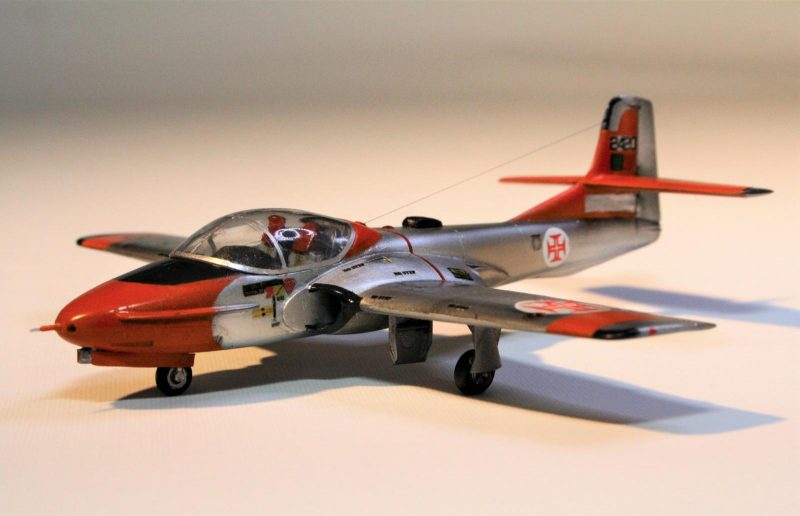
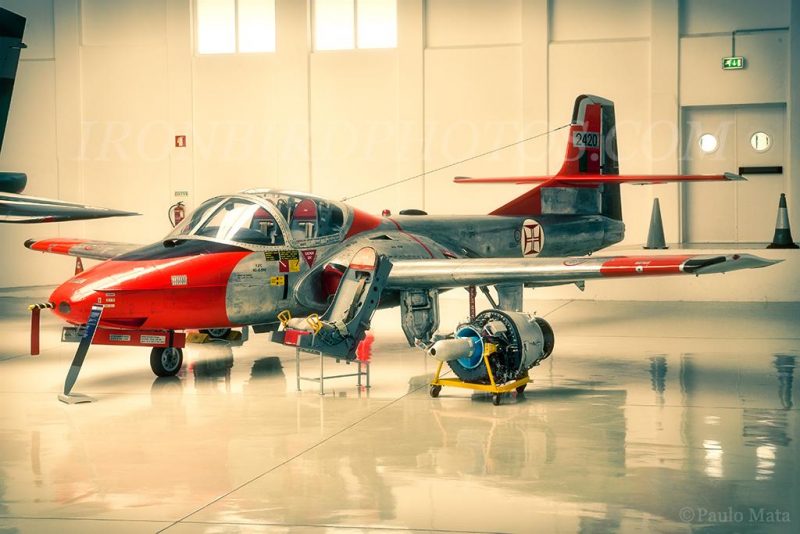
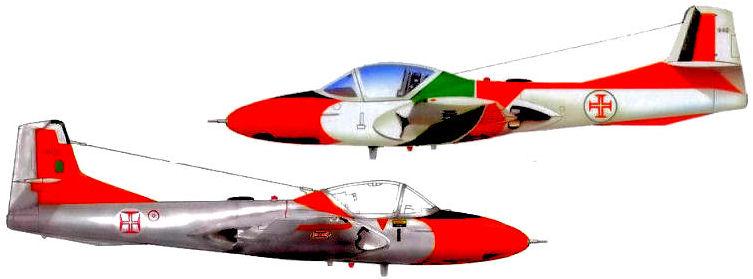

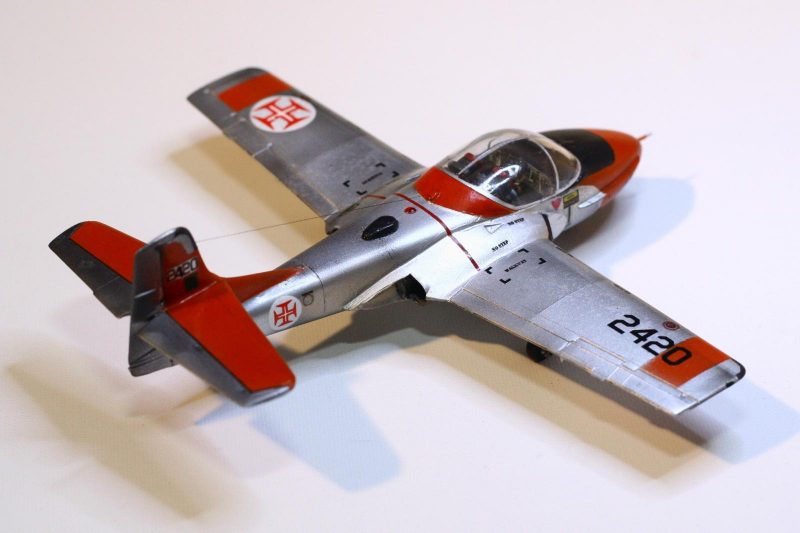
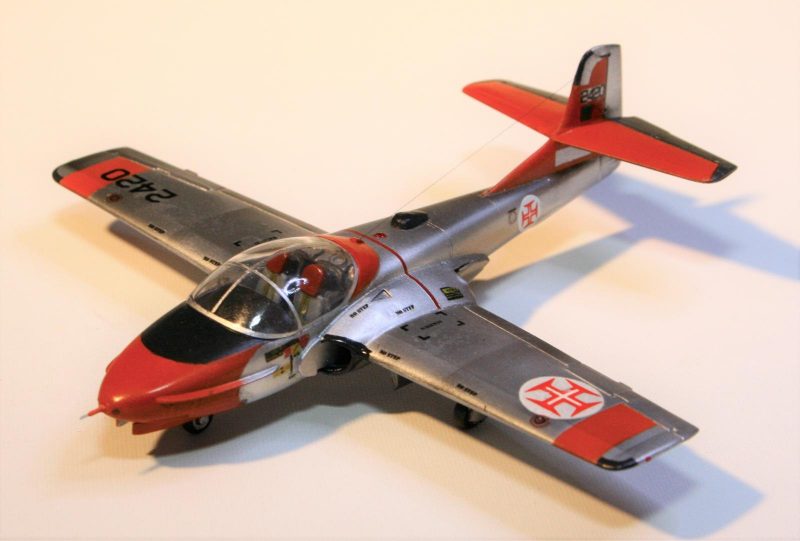

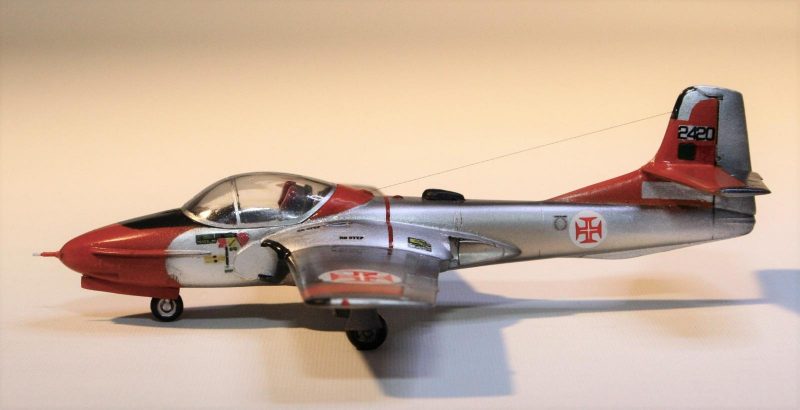
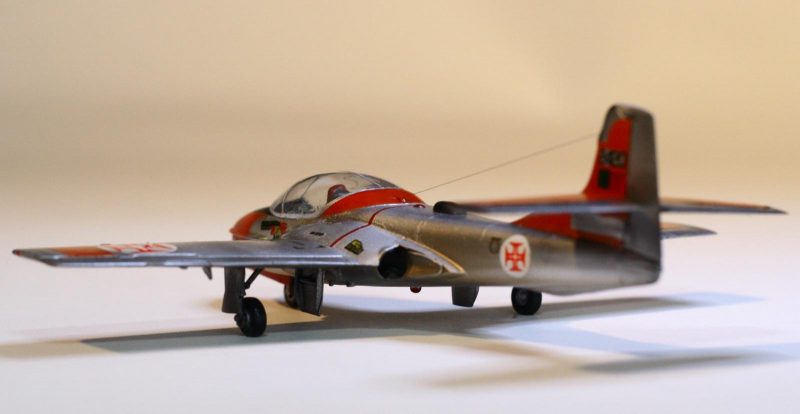
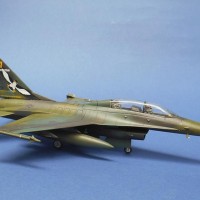
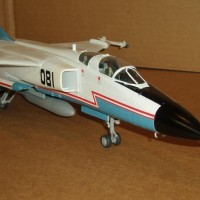
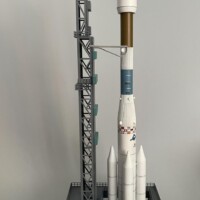
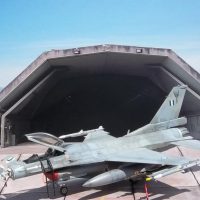
Great looking plane, Manuel (@magrus). It brings back a lot of memories. I spent 10 years as an instructor pilot in T-37s in the US Air Force. It was a fun plane to fly.
Thank you Sir!
Glad you liked and that my humble build could trigger some kind memories.
Lovely! When I was in grade school in the late 60's, dad was an instructor pilot in T-38s, but we were based at Craig AFB, where both 38's and 37's flew. Was there for 3 years and never got tired of watching the 38's and 37's - and yes - I know first-hand where "tweets" came from!
Thks Greg! 37's and 38's are handsome aircrafts. Portugal had some T-38 too, so... 😉
Love that color scheme!
Hi Rob! Yes, it's a nice one. USAF used it too
That's a lot of effort to turn an A-37 into a T-37 and you have done an excellent job of it. Nice result!
Thank you! I saw them flying when I was a kid, so had to try 🙂
Hi Manuel, This was an excellent article and great looking kit- great job!
I have a 1/48 A-37 waiting for a conversion- not sure why noone ever made a fuselage insert to make it easier. I hope to do a modification, and cast it for others. I should have an Asas De Portugal T-37C once I am done. What you wrote in your article is a big help to confirm the changes I need to make. I understand spoken Portuguese and can read it fairly well, but sadly I can't write to you in Portuguese! My Parents came from The Acores, and quite a few Acoreans came to Bermuda, so we have a lot of Portuguese speakers here!
I also have a 1/48 Alpha Jet to build as an Asas De Portugal demonstrator.
Hi Dan! I'm going to build an Asas de Portugal T-37 as well in the future and I have some reference photos. Let me know if you need anything.
Boa sorte e depois queremos ver essas belezas nas cores lusas.
Um abraço
M
Hi Manuel @magrus!
This is such a great build!
Not only you had to correct those "upleasant particularities" you mentin above, but also you made all those many mods to correctly bring the A-37 to T-37 status, home made decalling included!
Thanks for sharing your work, it is a joy to watch!
Hi Spiros,
Thanks for your kind words!
It was a pleasure building this little fellow, but yes had a lot of work
Belo trabalho Manuel! E ainda para mais como prova de amizade. That’s a perfect replica of the real T-37 stationed here in the Museum, great job!
Thank you Pedro!
É um aviao lindo e ainda bem que o Museu mantém estes pedaços de história.
Um abraço
Manuel:
Great photos and story...thanks for sharing...Rodney
Thks Rodney!
my pleasure,
M
Well done, Manuel.
Nicely writtern article supporting this wonderful build.
Always good to see a Portugese build.
Thank you John! This convertion took me some time and effort so an according article was mandatory :-).
I'm glad you liked it
Hi Manuel,
This is a very nice finished model and an excellent article.
Congratulation!
Thank you Roberto, ainda bem que gostou!
Um abraço
Parabéns, fantástica montagem. Traz gratas lembranças, fui formado na Academia da Força Aérea , no Brasil, em 1978, nesse igualmente fantástico avião! A conversão de A para T-37 está perfeita!
Congrats, fantastic build. And brings back nice memories, for I was graduated at the Brazilian Air Force Academy, in 1978, flying this very same type. And the conversion from A to T-37 is perfect.
Muito obrigado @george72! kind words, much appreciated, Sir